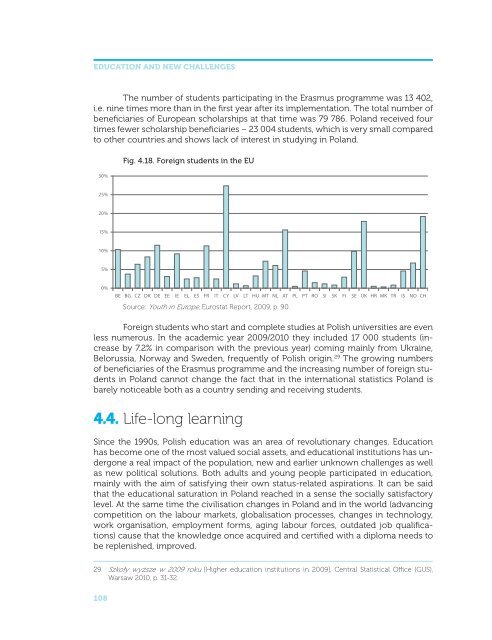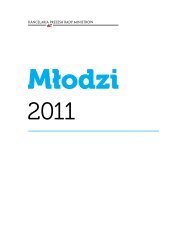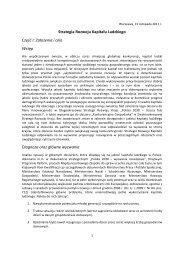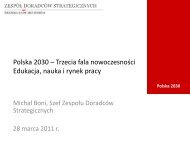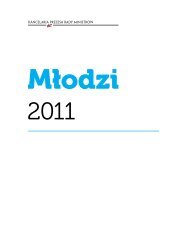Education and new challenges - Raport Polska 2030
Education and new challenges - Raport Polska 2030
Education and new challenges - Raport Polska 2030
You also want an ePaper? Increase the reach of your titles
YUMPU automatically turns print PDFs into web optimized ePapers that Google loves.
<strong>Education</strong> <strong>and</strong> <strong>new</strong> <strong>challenges</strong><br />
The number of students participating in the Erasmus programme was 13 402,<br />
i.e. nine times more than in the first year after its implementation. The total number of<br />
beneficiaries of European scholarships at that time was 79 786. Pol<strong>and</strong> received four<br />
times fewer scholarship beneficiaries – 23 004 students, which is very small compared<br />
to other countries <strong>and</strong> shows lack of interest in studying in Pol<strong>and</strong>.<br />
30%<br />
Fig. 4.18. Foreign students in the EU<br />
25%<br />
20%<br />
15%<br />
10%<br />
5%<br />
0%<br />
BE<br />
BG<br />
CZ<br />
DK<br />
DE<br />
EE<br />
IE<br />
EL<br />
ES<br />
FR<br />
IT<br />
CY<br />
LV<br />
LT<br />
HU MT NL<br />
AT<br />
PL<br />
PT<br />
RO<br />
SI<br />
SK<br />
FI<br />
SE<br />
UK<br />
HR MK<br />
TR<br />
IS<br />
NO CH<br />
Source: Youth in Europe, Eurostat Report, 2009, p. 90.<br />
Foreign students who start <strong>and</strong> complete studies at Polish universities are even<br />
less numerous. In the academic year 2009/2010 they included 17 000 students (increase<br />
by 7.2% in comparison with the previous year) coming mainly from Ukraine,<br />
Belorussia, Norway <strong>and</strong> Sweden, frequently of Polish origin. 29 The growing numbers<br />
of beneficiaries of the Erasmus programme <strong>and</strong> the increasing number of foreign students<br />
in Pol<strong>and</strong> cannot change the fact that in the international statistics Pol<strong>and</strong> is<br />
barely noticeable both as a country sending <strong>and</strong> receiving students.<br />
4.4. Life-long learning<br />
Since the 1990s, Polish education was an area of revolutionary changes. <strong>Education</strong><br />
has become one of the most valued social assets, <strong>and</strong> educational institutions has undergone<br />
a real impact of the population, <strong>new</strong> <strong>and</strong> earlier unknown <strong>challenges</strong> as well<br />
as <strong>new</strong> political solutions. Both adults <strong>and</strong> young people participated in education,<br />
mainly with the aim of satisfying their own status-related aspirations. It can be said<br />
that the educational saturation in Pol<strong>and</strong> reached in a sense the socially satisfactory<br />
level. At the same time the civilisation changes in Pol<strong>and</strong> <strong>and</strong> in the world (advancing<br />
competition on the labour markets, globalisation processes, changes in technology,<br />
work organisation, employment forms, aging labour forces, outdated job qualifications)<br />
cause that the knowledge once acquired <strong>and</strong> certified with a diploma needs to<br />
be replenished, improved.<br />
29 Szkoły wyższe w 2009 roku [Higher education institutions in 2009], Central Statistical Office (GUS),<br />
Warsaw 2010, p. 31-32.<br />
108


